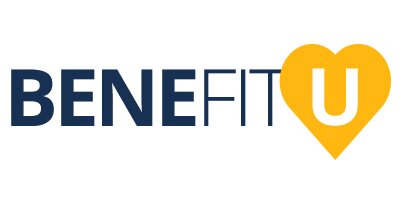BY REID JUST
CLIENT SERVICE DIRECTOR, PC
Let’s start with a question. For those of you in the Architect and Engineer world, does this look familiar?
“ABC Company and DEF Construction Co. and their successors, assigns, officers, directors, employees, agents, uncles, brothers, and pets are to be added as Additional Insured on a primary/non-contributory basis. A Waiver of Subrogation in favor of all parties to be included on General Liability, Auto, and Workers’ Compensation policies.”
My guess is your answer is YES! So, when your clients ask you to add a statement like this on the Certificate of Insurance, do you know what they’re really asking for…or how their requests impact your insurance coverage/response to a claim?
The Basics
Before I go much further, I want to explain something about certificates. According to Black’s Law, a certificate of insurance is a “document evidencing the fact that an insurance policy has been written and includes a statement of the coverage of the policy in general terms.” Certificates are ONLY snapshots of basic policy coverages and limits at the time of the issuance of the certificate. Certificates cannot modify, alter, or amend coverages or change the terms of the insurance contract.
OK…now that I’ve stated that, let’s take a look at the main requests we receive from your clients. Please note: My list includes a general explanation only. You should refer to your policy and/or endorsement(s) to determine the conditions and limitations of the specific coverages.
Additional Insured
Since the owner and/or general contractor have little, if any, actual involvement in the subcontractor’s work, the purpose behind securing additional insured coverage in the construction context is to pass the cost (and risk of loss) to the subcontractor (or subconsultant) who has active involvement and control of its operations and its employees. Additional insured coverage provides both a defense and indemnity (damages) to the additional insured. Generally speaking, if a third party sues your client because of a loss caused by your negligence, your client could attempt to access coverage under your policy as well as their own. This verbiage applies to general, auto, and umbrella liability policies only. It’s not available with regards to professional liability coverage.
Primary/Non-Contributory
This request has two parts:
Primary — The owner, contractor, etc. wants your policy to be the primary source of recovery and protect their policy from paying for defense or indemnification should they be sued as a result of an accident caused by you; and
Non-contributory — Could have two meanings, depending on the language in your policy/endorsement. It could mean that even if your insurance limits are exhausted (through the primary coverage above), their policy will not be accessed to provide defense or indemnification coverage. Or, it could mean their policy will be strictly excess, non-contributing to the primary insurance. It’s vital to know the difference as you may not desire your policy to be the sole source of recovery. This verbiage applies to general, auto, and umbrella liability policies only. It’s not available with regards to professional liability coverage.
Waiver of Subrogation
I’ve outlined two scenarios for you:
Workers’ Compensation — Your employee is doing work for your client and is injured on the jobsite. Your workers’ compensation carrier pays the claim, but then seeks recovery/reimbursement from your client’s policy on the basis that your client was liable in some way for the injury.
Professional Liability/General Liability/Auto — The general contractor is primarily responsible for bodily injury at the jobsite, but your firm is included in legal action brought by an injured party. Your carrier pays an amount to settle the claim against you. After payment is made, your carrier seeks recovery from the general contractor’s policy based on their primary responsibility. A waiver of subrogation removes the ability of your insurance carrier from seeking recovery/reimbursement from your client’s policy — regardless of fault. This verbiage is available on all policy types.
30-Day Notice of Cancellation
Your clients often request that they be provided a 30-day notice of cancellation, non-renewal, or material change in your insurance policies. An endorsement can be included on your policies to provide just that — a notice to your client that the policy is being cancelled or non-renewed by the insurance carrier. When it comes to “material changes,” however, this type of notice isn’t available to your clients in most instances. This verbiage can be very far reaching and require that notice be provided when there’s movement of any claims dollars on the policy not related to your client. The 30-day notice of cancellation and nonrenewal is available on all policy types.
To Sum It Up…
As design professionals, the majority of these requests don’t even apply to the type of services you’re providing. But, they’re VERY typical requests in the construction industry, so Architects and Engineers fall victim to the “good for the goose, good for the gander” philosophy. From the standpoint of your clients, it doesn’t hurt to ask for the moon, even if you know you won’t get it. As one attorney opined, “I ask for everything I can get. It’s the other guy’s responsibility to say ‘no’.”
Because the bulk of your exposure is covered by your Professional Liability policy, most insurance carriers with an Architect/Engineer specialty recognize the limited exposure to design professionals as it relates to these requests and include them automatically in the policy language or offered by endorsement for a minimal premium. It remains crucial for you to understand these requests and how they can impact your insurance policies.
If you have questions about this, don’t hesitate to reach out. We have an entire staff dedicated to understanding the rules, exposures, and policies, and we’d love to help you!
